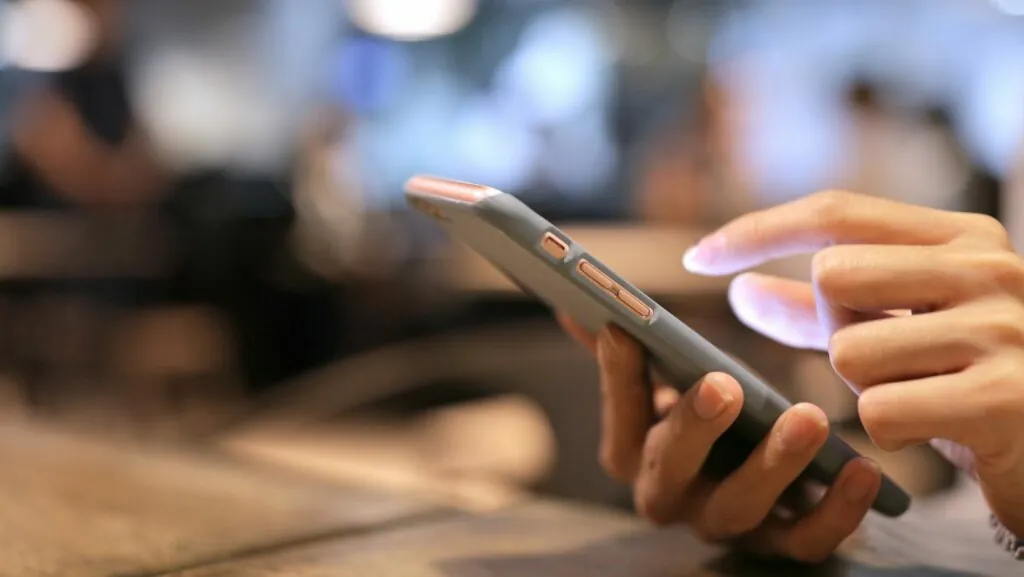Measuring how much your audience truly interacts with your Instagram content has never been more crucial especially in 2025, when algorithms and AI now determine which brands win the battle for attention. That’s where the Instagram Engagement Rate Calculator comes in.
This simple yet powerful metric helps you understand how engaged your audience really is, beyond just likes and followers. Whether you’re a creator, brand, or marketer, knowing your Instagram Engagement Rate helps you gauge content performance, audience loyalty, and ROI of your social efforts.
In this guide, we’ll explore what engagement rate means, how to calculate it step-by-step, benchmarks for 2025, and AI-driven tools that make engagement tracking smarter and faster than ever.
Table of Contents
ToggleWhat Is Instagram Engagement Rate Calculator?
The Instagram Engagement Rate Calculator is a digital tool used to measure how actively users interact with your content — through likes, comments, shares, saves, and even story interactions.
In simple terms, engagement rate represents how much your audience connects with what you post. It answers one essential question:
Out of everyone who sees my post, how many people actually care enough to engage?”
Unlike vanity metrics such as follower count, engagement rate reflects real audience interest and content relevance. That’s why top social media managers and influencer marketers rely on it to assess campaign success and justify partnerships.
According to Hootsuite’s 2025 Social Trends Report, average engagement rates across industries have dropped slightly due to increased competition on Reels and Stories — making strong engagement performance more valuable than ever.
What Does Engagement Rate Mean on Instagram?
Your Instagram engagement rate is a measure of audience interaction — how many people respond to your content compared to your total number of followers or viewers.
It includes multiple types of engagement:
- Likes (surface-level appreciation)
- Comments (deeper interaction and feedback)
- Shares & Saves (signals of strong content value)
- Replies and link taps (especially in Stories and Reels)
In 2025, engagement has evolved to also include watch time, profile visits, and button clicks giving brands a more complete view of how content drives user action.
Instagram Engagement Rate = Total Interactions ÷ Audience Size × 100
This formula can be adjusted depending on whether you’re analyzing a single post, a campaign, or an entire account.
Why Engagement Rate Matters in 2025
In 2025’s AI-driven marketing landscape, engagement rate is more than a social metric — it’s a business performance indicator.
Here’s why it matters:
- Algorithm Visibility: Instagram’s feed and Reels algorithm rewards high-engagement posts with broader reach.
- Brand Credibility: High engagement signals trust and authenticity — crucial for influencer deals or brand partnerships.
- Conversion Predictor: Engagement often precedes conversion. A follower who comments today may purchase tomorrow.
- Campaign Benchmarking: Engagement rate helps marketers compare results across platforms or audiences.
“Engagement is the new currency of attention,” says HubSpot’s 2025 State of Social Media Report, emphasizing that interaction metrics are now core to marketing ROI analysis.
Instagram Engagement Rate Formula Explained
Let’s break down the math.
The standard formula most social media professionals use is:
Engagement Rate = (Likes + Comments + Shares + Saves) / Followers × 100
If you’re analyzing Reels or Stories, you can modify it based on views or reach instead of followers.
| Metric | Formula | Example Result |
| Engagement Rate | (Likes + Comments + Shares) / Followers × 100 | 4.5% |
| Story Engagement Rate | (Replies + Shares) / Views × 100 | 2.8% |
| Reel Engagement Rate | (Likes + Comments + Saves) / Views × 100 | 5.1% |
Example:
If a post has 800 likes, 120 comments, and 80 shares from 15,000 followers, then:
(800 + 120 + 80) ÷ 15,000 × 100 = 6.6%
That’s a strong engagement rate — especially for branded content.
Step-by-Step: How to Calculate Engagement Rate
- Collect Post Data:
Export likes, comments, shares, saves, or replies from Instagram Insights. - Select Audience Base:
Choose whether to divide by followers, reach, or impressions.
- Use followers for account-level engagement.
- Use reach for post-level engagement accuracy.
- Use followers for account-level engagement.
- Apply the Formula:
Plug your totals into the formula:
(Total Interactions ÷ Total Audience) × 100 - Compare Over Time:
Analyze multiple posts or campaigns to see engagement trends. - Use an AI-Powered Calculator:
Modern calculators automatically factor in watch time, saves, and engagement decay (how quickly interest drops).
Tip: For consistent results, always use the same calculation base — either followers or reach — across all your comparisons.
What Is a Good Engagement Rate on Instagram?
Engagement benchmarks vary widely by industry, audience size, and content type.
According to Later’s 2025 Instagram Benchmark Report:
| Follower Count | Average Engagement Rate |
| 1K – 10K (Micro Influencers) | 4.5% – 6.8% |
| 10K – 100K (Mid-Tier) | 2.1% – 4.0% |
| 100K – 1M (Macro) | 1.5% – 2.5% |
| 1M+ (Celebrities/Brands) | 0.5% – 1.3% |
For brands, anything above 2% is considered healthy, while above 5% is exceptional.
For influencers, 4–6% remains the sweet spot for partnerships.
However, don’t chase numbers blindly. Engagement quality — meaningful comments, saves, DMs — often matters more than the raw percentage.
Engagement Rate vs. Reach Rate vs. Impression Rate
These three metrics are often confused but measure different aspects of audience behavior:
| Metric | Definition | Ideal Use |
| Engagement Rate | Interactions vs followers/reach | Measures how engaging content is |
| Reach Rate | Reach ÷ Followers × 100 | Measures how many followers saw your post |
| Impression Rate | Impressions ÷ Followers × 100 | Tracks visibility, including repeats |
Engagement rate reflects depth of interaction, while reach rate reflects breadth of exposure.
Together, they form a holistic picture of content effectiveness.
In 2025, marketers increasingly use hybrid metrics — like Engagement-per-Reach — to assess campaign efficiency.
Instagram Engagement Rate Calculators (Tools for 2025)
Here are some of the top tools you can use in 2025 to calculate and analyze engagement with accuracy and automation:
- WASK Free Instagram Engagement Rate Calculator
- AI-powered and browser-based
- Tracks likes, comments, and saves automatically
- Provides post-by-post comparison and exportable CSV reports
- AI-powered and browser-based
- Hootsuite Analytics
- Integrates with Instagram Business accounts
- Offers AI insights and engagement trend predictions
- Integrates with Instagram Business accounts
- Sprout Social
- Great for team dashboards and historical engagement tracking
- Great for team dashboards and historical engagement tracking
- Later Analytics
- Provides industry benchmarks and best posting times
- Provides industry benchmarks and best posting times
- SocialBlade
- Ideal for influencer comparisons and brand audits
- Ideal for influencer comparisons and brand audits
In 2025, most engagement calculators leverage AI and predictive modeling to forecast engagement drops, detect fake followers, and analyze post sentiment.
Common Mistakes When Measuring Engagement
Even experienced marketers can misinterpret engagement data.

Avoid these pitfalls:
- Ignoring Reach or Impressions:
Calculating engagement only by followers can distort results if reach fluctuates. - Counting Paid Interactions:
Boosted or promoted posts inflate engagement — always separate organic from paid. - Overlooking Saves & Shares:
These are the strongest indicators of genuine interest but often forgotten. - Comparing Across Niches:
A beauty influencer’s engagement rate isn’t comparable to a B2B SaaS brand’s. - Not Updating Benchmarks:
Engagement trends shift yearly. Use 2025 industry data for accurate insights.
Remember: Engagement is context-dependent. Always interpret it alongside content type, format, and audience intent.
2025 Trends: AI-Powered Engagement Analytics
As social platforms evolve, AI-based engagement analytics are reshaping how we measure content performance.
Here’s what’s changing in 2025:
1. AI-Driven Prediction Models
Tools like WASK, Hootsuite, and Metricool now predict engagement probability for new posts based on historical data.
2. Emotion Recognition & Sentiment Analysis
Algorithms can analyze comment tone and emoji sentiment to gauge emotional engagement — not just numeric.
3. Cross-Platform Integration
Marketers track engagement across Instagram, TikTok, and YouTube in unified dashboards.
4. Smart Alerts for Drop Detection
AI tools send notifications when engagement suddenly decreases due to algorithm updates or posting gaps.
5. Deeper Metrics Beyond Likes
Modern analytics track “save rate,” “average watch time,” and “comment quality index.”
“Engagement analytics are no longer reactive — they’re predictive,” notes Sprout Social’s 2025 AI Impact Report.
Conclusion and Expert Insights
The Instagram Engagement Rate Calculator remains one of the most valuable tools for measuring content performance and audience connection in 2025.
As AI reshapes social analytics, engagement rate has evolved from a vanity metric to a core indicator of trust, creativity, and audience loyalty.
Whether you’re a brand optimizing ad spend or a creator negotiating deals, understanding engagement rate helps you make smarter, data-driven decisions.
“Consistency, authenticity, and meaningful interaction are the three pillars of engagement in 2025,” says a HubSpot analyst — reminding us that genuine connection always outperforms algorithmic tricks.
FAQs
1. What Is A Good Engagement Rate On Instagram In 2025?
A good engagement rate depends on your audience size and niche.
- Micro influencers: 4–6%
- Mid-tier brands: 2–4%
- Large accounts: 1–2%
Anything above 5% is considered excellent.
2. How Do I Calculate My Engagement Rate Manually?
Use this formula:
(Likes + Comments + Shares + Saves) ÷ Followers × 100
You can also use reach instead of followers for more accuracy.
3. What Affects Engagement Rate The Most — Likes Or Saves?
While likes show instant reaction, saves and comments indicate deeper value.
In 2025, Instagram’s algorithm prioritizes saves and watch time, so they weigh more heavily in engagement scoring.
Summary
The Instagram Engagement Rate Calculator is essential for marketers who want to understand how their content performs and where improvements are needed. In 2025, engagement measurement has become smarter, more data-driven, and deeply integrated with AI analytics — turning every like, comment, and save into an insight that fuels better marketing decisions.


